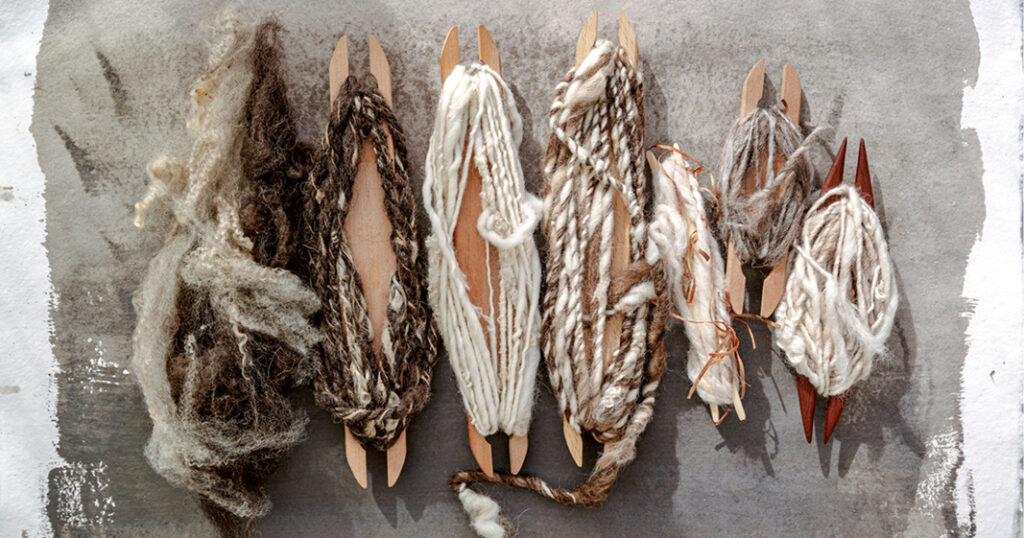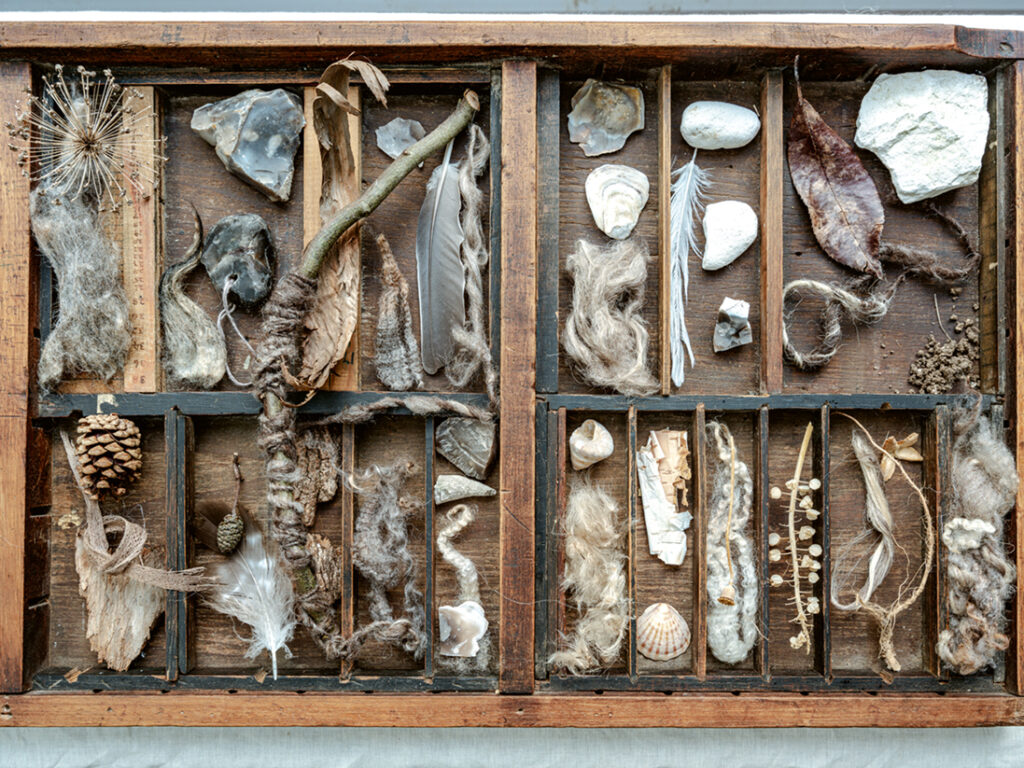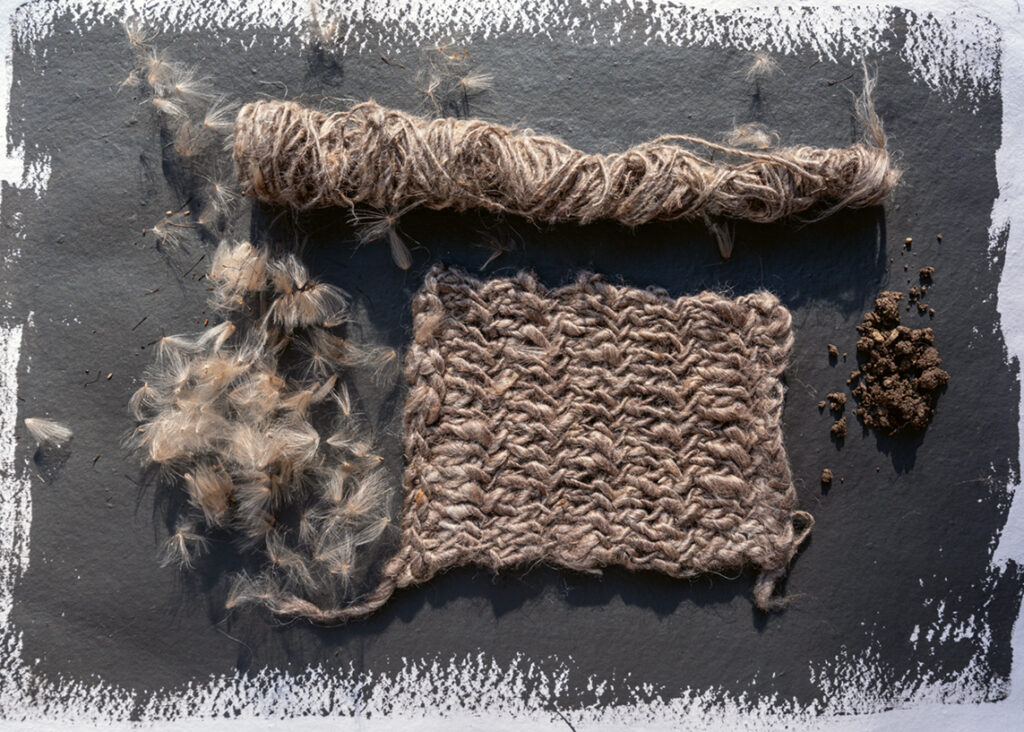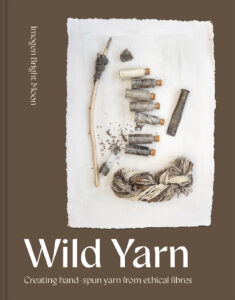Curating and collecting yarn

Curating yarn is the realm of the dedicated craftsperson who deeply appreciates yarn as its own expressive medium; and the stash, as it’s known, is the considered selection and collection of said yarns. Imogen Bright Moon, author of Wild Yarn: Creating hand-spun yarn from ethical fibres delves into the joy and creative process of curating and collecting yarn.
by Imogen Bright Moon
Your collection might contain your own handspun yarns, purchased yarns, commissioned yarns or yarns made to other spinners’ visions, vintage finds, or more commercially produced yarn. My own collection has moved through all of these iterations in combination. Curating your yarn stash marks the beginning of the design process, or if you want to be fully trusting of the intuitive-creative process, it can be the entirety of the design process. Let me elaborate…
When we think of ‘design’, and often when we train formally in textile design, there is a space in between the materials and the action of craft, that being the realm of the sketchbook. Sometimes the sketchbook is a primary object and the material considerations are connected with the design after the fact, as a retrofitted aspect. Sometimes the white pages of a new sketchbook present a physical creative barrier and psychological block to action. As an experimental pattern cutter, I was a materials-lead practitioner, and I would let the material show me what form it wished to take across the entire process; in the garment shape, construction and finishing. There was a symbiosis between materiality and the flat-lay of the pattern, with a sketchbook becoming more of a diary and recipe book of notes as I gained confidence in my process. Since I turned my attention to yarn work and weaving, I have let go of sketchbooks and go straight to my materials. My approach to design is much more based on trust; trusting the materials and the yarns, and moving them between my hands from a raw form, then a yarn form, into a woven form.

In this way, and to use some art therapy language, I get out of my own way; or to speak somatically, I get out of my head and into my hands. I don’t have a pre-determined idea of an outcome, I don’t follow a sketch or pattern. Instead, I literally go with the flow and see what happens. I think in the world of craft this creative self-trust needs more amplification.
A simple way of transitioning from yarns to loom (for example), is to lay out or hang up your hanks in the sequence in which you desire to weave them. This arranging or organizing of order can be the design process in completion: a series of choices, based on instinct, whereby we have already chosen the yarn for its inherent qualities and our own responses to its textural nature. In this way the organic arrangement flows into the final work, which is somewhat of a surprise once it is unrolled and seen in its wholeness. I then hang up the finished work, regard it and sit with it, and respond to the overall feeling of encountering the work. I acknowledge I am in a creative relationship with my work, and we are having a conversation.
The next work I make builds upon this experience and encounter, and growing a body of work in this way connects mindfulness, meaning and craft into a creative cycle of self-expression and self-reflection. To go a step further, placing the works back into the landscape to review them adds another layer of conversation and relationship between your craft and your environment. In this way, craft practice becomes expansive, connective, holistic and therapeutic.
This is why curating and collecting your stash from a place of joy, interest and freedom is the root and key to a finished work that feels like you accurately interpreted the essence of the raw material; that it represents some of the wildness you felt and the emotional qualities and stories of the materials themselves. When considering these points, in recognition of the creative potential in any particular yarn to convey these aspects into and within a finished work, we start to see how a materials-lead practice deepens the personal experience of craft and forms a space of narrative textiles with the capacity to tell the stories of our time.

Reasons for Growing a Yarn Collection
These are many, however some familiar needs yarn collectors will recognize include:
- Small batch yarn which is non-repeatable
- Finding a stunning yarn that simply must go in the collection
- Curating yarns on a theme, by shade or fibre, for example
- Collecting yarns towards a specific project
- Yarns to study as primary research
- Yarns to swatch and sample with
- Yarns to inspire
- For the love of looking at a well-crafted stash and feeling pure joy
- To participate in international craft exchanges, such as FibreShare (which I hope returns soon)
GENTLE TASK
Think about the paths to inspiration that you have walked as you’ve been reading: the lands, landscapes, seasons, elements, textures, shades, themes and feelings that you have been contemplating, noting and experiencing. Take time to vision three elements:
wool, shell, winter
or
fire, smoke, autumn
or
spider, pewter, rain
Wild Yarn: Creating hand-spun yarn from ethical fibres by Imogen Bright Moon is available now. Photographs by Béla Váradi.


